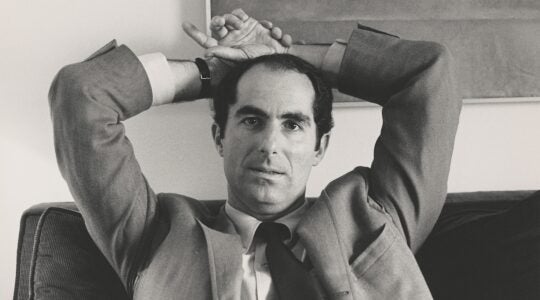Prague, Czech Republic — On a recent visit here, my wife and I toured several famous synagogues, remarkable for their long history, beautiful architecture and vast size, part of the reason why for tourists, the Jewish sites of this charming city — most notably the centuries-old cemetery in the center of town — are second only in popularity to the ancient royal castle that dominates the skyline.
But the place of worship that had the most profound effect on us was a little known, low-ceilinged and very small room in Terezin (or Theresienstadt), the town an hour north of here infamous for its use as a transit ghetto. It housed more than 150,000 Jews during the Holocaust, most of whom were “sent East” — to Auschwitz — never to return, while tens of thousands died in Terezin of disease and despair.
It was in Terezin where the achingly poignant drawings of so many children were later found, and where the Nazis staged one of their most elaborate and successful propaganda coups, convincing visitors from the Red Cross on one fateful day in June 1944 that the rumors about the horrors of the place were false.
I had been somewhat steeled for these sites, and even for viewing the four ovens of the crematorium the Nazis built with their cruel efficiency to dispatch the bodies of the 125 or so people who died every day during the three and a half years of Terezin’s tragic reign.
But I was surprised when, toward the end of our visit, our thoughtful guide, Aharon Hribek, brought us to a 12 by 15-foot room in one of the buildings used as horribly overcrowded barracks during the war. (At any one time, about 70,000 men, women and children were crammed into an area that held 7,000 inhabitants before the war.)
Only a few people could stand in the room at a time, but what distinguished it were the faded but still legible symbolic drawings and Hebrew letters on its walls, transforming it into a secret, and forbidden, house of worship.
As in many synagogues, one wall has written in beautiful Hebrew script, the words from the Talmud: “Know before whom you stand.”
On another wall, from the Amidah: “May our eyes behold Your return to Zion in compassion.”
And the largest, and most poignant inscription, from the Tachnun prayer: “We beg You, turn back from Your anger and have mercy on the treasured nation that You have chosen.”
Underneath those words is the passage from the morning prayers that calls on God to deliver all Jews from distress and captivity, wherever they may be, and bring them “from darkness to light, from subjugation to redemption, now, speedily and soon.”
The contrast between this simple space and the grandeur of the Jerusalem and Spanish Synagogues of Prague could not have been more stark. Standing in those awesome settings, I was struck by the vastness and splendor around me, testimony to the wealth and pride of a community that somehow managed to overcome persecution over the centuries and build places of worship that rivaled those of their Christian neighbors.
But this nameless and humble room in Terezin seemed suffused with abiding faith, holiness and sadness, its writings blending trust in God’s compassion and calls for retribution against an incomprehensible, sadistic enemy. One can only imagine the thoughts and prayers of those who worshipped here, a few feet away from their persecutors.
Aharon explained that this would-be shul was created by Arthur Berlinger, a middle-aged Orthodox rabbi, religious school teacher and cantor who had served in the army of his native Germany in World War I. He and his wife, Bertha, were deported to Terezin in September 1942. Berlinger discovered an unused shed and set up the room for illegal prayer services, decorating it with paints he must have had access to in his work in one of the camp’s art workshops.
He and his wife perished in Auschwitz, but their two daughters, who were sent to England on a Kindertransport, survived the war.
Discovered less than 20 years ago as a secret prayer room, the former storeroom was restored and is open to the public, though few know of its existence.
That’s a shame because just as the majestic synagogues of Prague shed light on an enduring community that somehow flourished amidst persecution, the humble room at Terezin reminds us that a spark of tradition still flickered in the hellholes of the Holocaust. But for far too many, their fervent prayers remained unanswered and the redemption they yearned and pleaded for did not come “speedily and soon,” indeed, not at all.
All the more reason for those of us blessed to live in freedom to devote ourselves to keeping the fires of our faith burning, in memory of those who came before and in honor of those who follow
The New York Jewish Week brings you the stories behind the headlines, keeping you connected to Jewish life in New York. Help sustain the reporting you trust by donating today.





